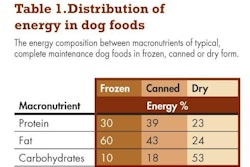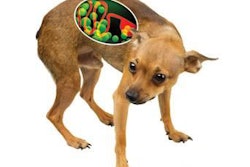
The petfood market in China is poised to soar. Between 2000 and 2010, petfood sales in the country rose nearly 800%, according to Goumin.com, the largest online network for pet owners in China.
Since 2010, China has become the fourth-fastest-growing market for overall pet care, Eurmonitor says, reaching US$1.3 billion in 2012. Only 37% of that, or about US$480 million, is petfood sales. Considering that pet ownership in China is also growing rapidly, yet currently few pet owners feed their pets commercial petfood (even in the largest cities, the percentage is only at 5%, according to Goumin.com), the potential for continued petfood sales growth is very high.
At Petfood Forum China, petfood professionals can learn from industry experts how to best grow their businesses with the latest research on petfood ingredients, safety, processing and more. Scheduled for August 23 at the Shanghai World Expo Exhibition and Convention Center, this exclusive conference for the Chinese petfood industry will be co-located with Pet Fair Asia, one of the largest pet trade shows in China ( www.petfairasia.com ).
As of press time, the following topics and speakers have been confirmed:
The global and Chinese petfood markets — So and so, such and such with Euromonitor, provides the latest data and insights on the global and Chinese petfood markets. How are global developments affecting the domestic market and vice versa?
Krill as a functional and sustainable petfood ingredient — Signe Svindland, global manager of petfood for Aker BioMarine, presents results from more than 20 scientific, peer-reviewed papers on the health benefits and bioavailability of krill and some of its key nutrients, such as astaaxanthin and omega-3 fatty acids. Research also shows how krill can serve as a sustainable, highly available, adaptable and natural ingredient for petfoods.
Microbiological control systems in the petfood industry — James Giranda, vice president of food safety and quality systems for American Nutrition Inc., describes the essential elements of a comprehensive microbiological control system, including specific strategies, programs and processes to achieve the objective of eliminating environmental pathogens and cross contamination among finished products.
Pet owners' decision-making styles — Corinne Lamour, lecturer at Université Européenne de Bretagne, shares new marketing research on how pet owners make petfood purchase decisions, including factors such as high quality, brand, novelty-fashion, price, impulse, confusion, brand loyalty and brand prescription.
Nutritional management to improving skin and coat health of dogs — Ping Deng, PhD, post-doctoral research associate at the University of Illinois, summarizes data relevant to canine nutritional dermatoses and provides information pertaining to the relationship between dietary supplementation, including with functional ingredients, and management of select skin diseases.
Success in petfood drying: Key considerations for energy efficiency and safety — Dustin O'Farrell, process engineering manager for Bühler Aeroglide Asia, explains how to understand energy usage in drying extruded petfoods and how to manage it efficiently to save money and improve your processes, including achieving uniform moisture in the finished product to prevent safety risks and losses to the bottom line.
Impact of kibble formulation on palatability — Laurence Callejon, R&D dog platform manager for SPF, presents studies investigating the role of kibble formulation on dry cat and dog food palatability, including key elements of the matrix as well as interactions between the core kibble and topical ingredients (fat, palatants). For dogs, fat and protein origin have an important impact on palatability; for cats, the most important elements are protein source, starch quality and nutritional value.
Effect of protein sources on digestibility in Tibetan Mastiffs — Limin Ding, PhD, associate professor in the Department of Animal Nutrition at China Agricultural University, shares highlights of a trial she conducted with various protein sources—meals such as corn gluten, soybean, chicken, fish and duck—on diet intake, nutrient apparent digestibility and fecal quality in Tibetan mastiffs.
















